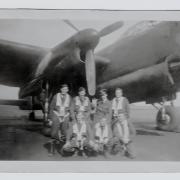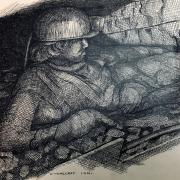Llangollen is a lovely setting for a spot of retail therapy
Llangollen’s stunning location is the backdrop for many attractions and a stroll through the town can lead to all kinds of delights.
It is a haven for those seeking interesting and unusual gifts as well as delicious local produce. There are lots of other attractions for the tourist from amateur dramatic performances to its famed International Music Eisteddfod every July.
This is definitely a place for the ladies - Plas Newydd was home to the Ladies of Llangollen, Lady Eleanor Butler and Miss Sarah Ponsonby, who became famous throughout the country and entertained many Regency society characters. Their house still retains the Gothic features they introduced and receives thousands of visitors each year as one of Wales’ most famous tourist attractions.
Strolling through the town on a spring day, across the famous Dee Bridge and through the Victorian streets and quaint individual shops is an essential part of a visit here.
In fact there are lovely walks in the town. A couple of miles along the canal, for example, will bring you to a pleasant hotel where you can stop off for a drink or a pot of tea.
Up to the 19th century the actual town was at the south-east of the bridge around Bridge Street and Church Street, and to the north-west around the old village green, which has now disappeared, but is remembered by such names as Green Lane and Green Lodge which still exist. Nearly all of this densely populated area disappeared to allow the building of the railway.
The famous Llangollen railway still runs and offers visitors the traditional thrill of a steam train ride. But enthusiasts should check their website for times and dates.
Llangollen became important because of its prominent position on the main London to Holyhead coaching road which was improved by Thomas Telford from 1815 and continued for some 15 years. The Canal was constructed around this time and combined to bring considerable immigration into Llangollen during the early part of the 19th century.
Now, from Llangollen Wharf you can embark on a 45-minute horse drawn trip or a two hour trip on the traditional Canal narrow boat, which takes you through the Vale of Llangollen and across the world’s biggest aqueduct at Trevor - built by Thomas Telford it is truly a masterpiece of engineering.
About Llangollen Like many ancient Welsh towns, Llangollen takes its name from its founding Saint; Collen. It was established in the 7th Century when The monk St. Collen was instructed to find a valley by riding a horse for one day and then stop and mark out a ‘parish’ a place to build his hermitage or cell in the custom of the times, with tiny church, hospice and outhouses all enclosed within a wall.
Where is Llangollen? This small town is in Denbighshire, north-east Wales, situated on the River Dee and on the edge of the Berwyn mountains



























